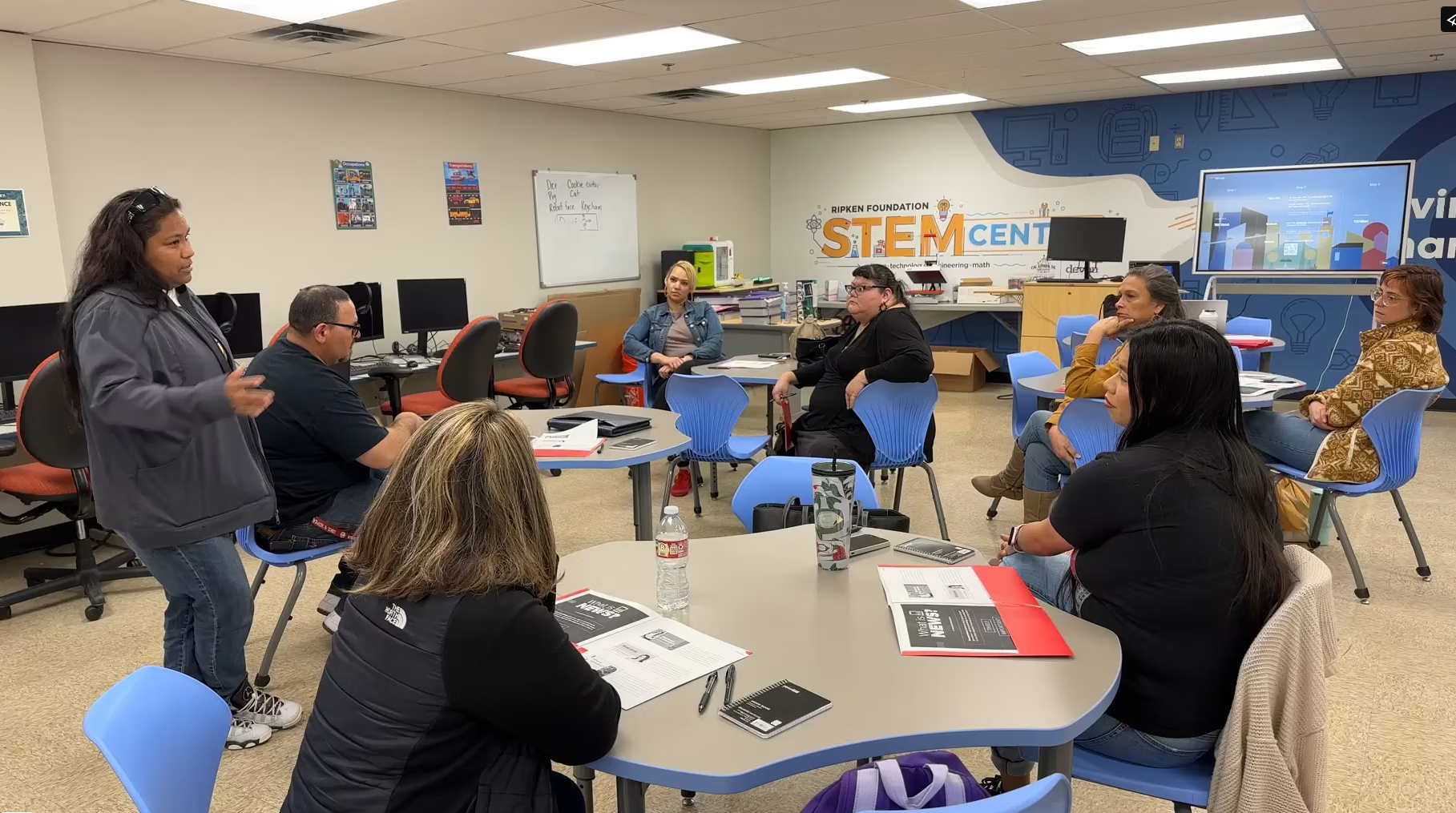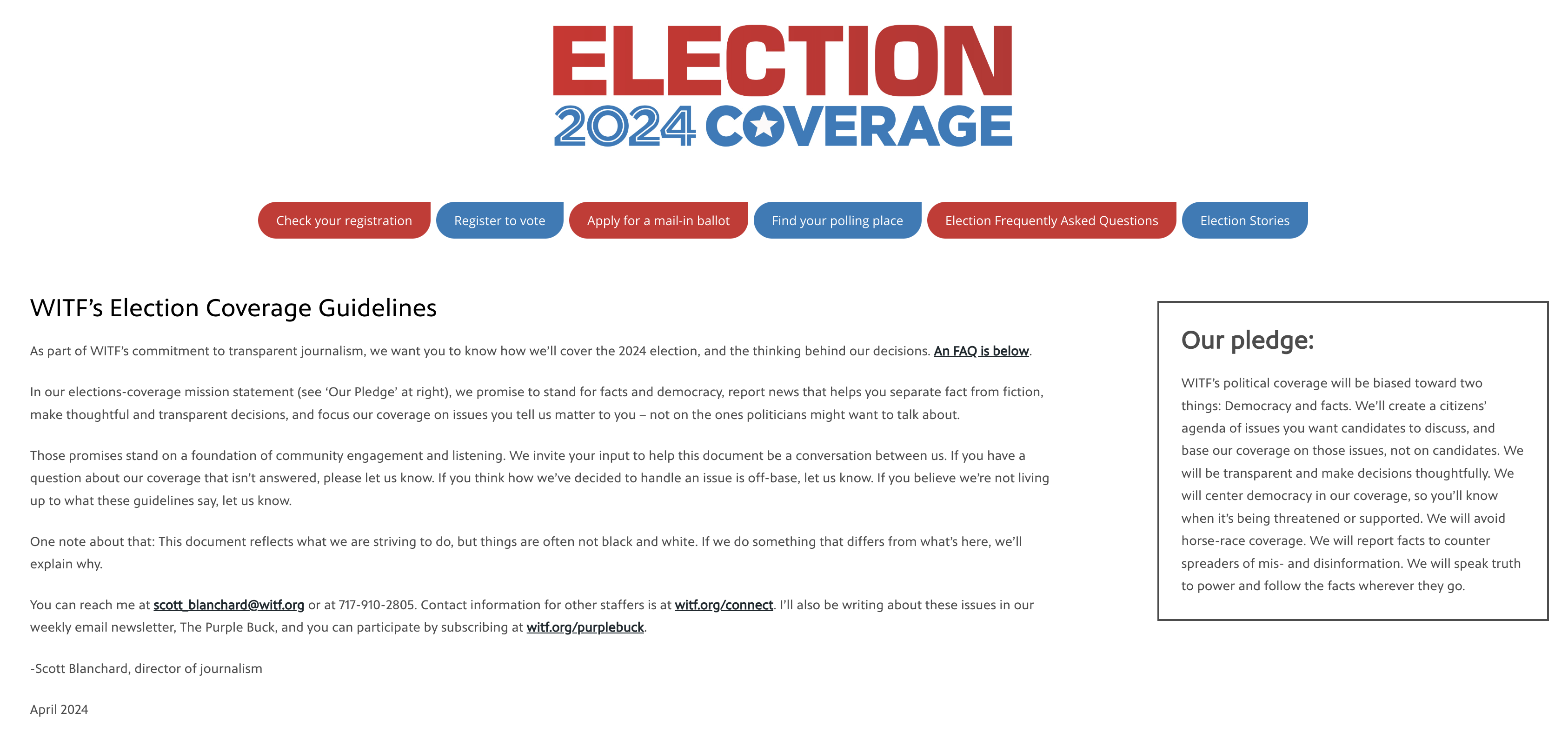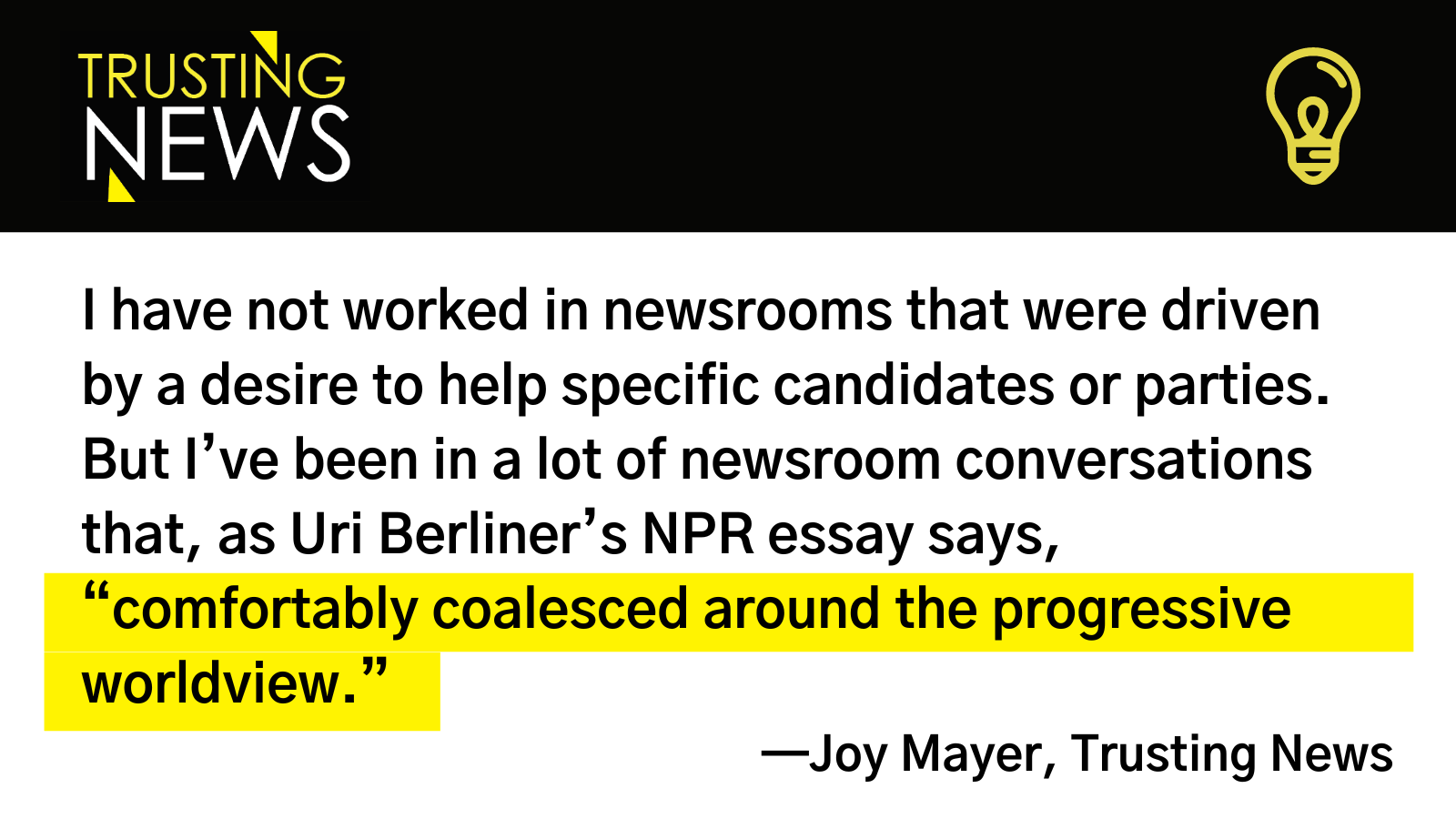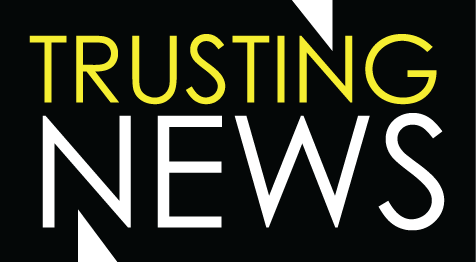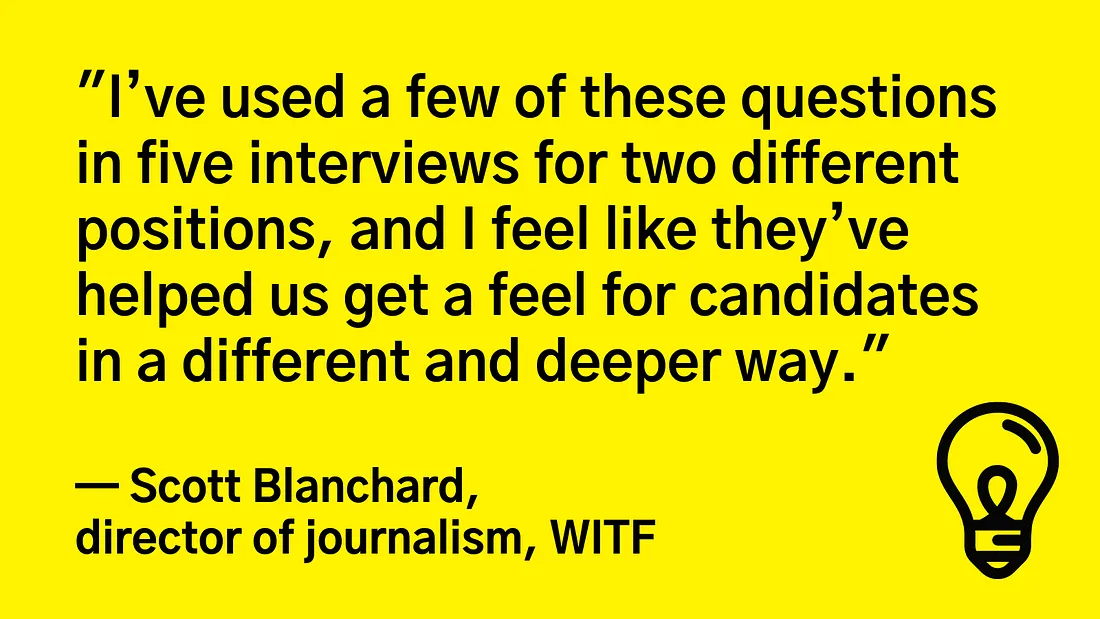
Whose voices are missing in your newsroom? Would you like to have them involved in sharing the stories you tell about your community? If so, does your hiring process allow you to learn about the views and experiences that inform how job candidates approach their work?
Bring more diversity to your newsroom staff with these interview questions
Journalists, we have to stop assuming people understand the mission, ethics and processes behind our work. We can’t let ourselves get lumped in with perceptions of “the media.” Instead, we need to actively work to earn trust from our communities by telling them why we’re worthy of their time, trust and support.
Journalism is a team sport, and we rely on each other for support and feedback. We also rely on each other to round out our collective view on the communities we cover.
What do we know? Who are we connected to? Where do people like us find information? What are we curious about? Or frustrated by?
An example: For a period of time in my last newsroom, I was one of the only staffers with young kids. Reporters came to me so often with questions. What did I know about the math curriculum? Where did parents look for summer camps? Did I know any stay-at-home dads we could interview? I was also quick with feedback on stories that affected my demographic.
Similarly, I turned to one editor for community history, and I knew he was also involved in the local music scene. Another had a deep understanding of how city organizations operated and about the area’s natural landscape and outdoor recreation. We all had insight about the parts of town we lived in and asked questions accordingly.
But what about the parts of town no one lived in? The demographics and interests we didn’t represent? As I’ve written before, the perspectives we have as human beings inform the lens through which we as journalists see our shared lives. And too often, our shared experiences and world views are quite similar.
Whose voices are missing in your newsroom? Would you like to have them involved in sharing the stories you tell about your community? If so, does your hiring process allow you to learn about the views and experiences that inform how job candidates approach their work?
We hope our new resource can help. Trusting News Guide: Hiring for Dimensions of Difference
Why “dimensions of difference”?
As part of our Road to Pluralism initiative, we’ve been working with partner newsrooms to create a resource for hiring editors. We want to make more room in the interview process to get to know what world views and experiences job candidates could contribute to the newsroom.
As a group, we talked to colleagues in newsrooms and HR departments about their priorities and concerns, and we heard the phrase “dimensions of difference” from one of those colleagues. It was her organization’s way of referring to the visible and invisible diversity they aimed to have represented on their staff. We’re adopting it here because it can apply to a wide spectrum of factors that make human beings who they are.
Who is on your staff, and why does it matter?
We know, of course, that journalists are often whiter than their communities — a well-established problem that is not getting better nearly fast enough. Compared to communities, journalists are also more likely to have a college degree, more middle to upper class and less likely to live in low-income areas. They are also different on any number of other factors — probably less likely, for example, to be disabled, to be religious or to have served in the military. And they are also less likely to vote conservative.
What we see in our own lives informs who we talk to, what we think is important, what we think is normal, what we ask questions about and, ultimately, what our coverage includes. And if our goal is for our coverage to reflect the diversity of our community accurately and with complexity, then the makeup of our staff should matter deeply to us. (As S. Mitra Kalita wrote for Time, college essay prompts are also addressing a similar theme.)
While we examine who’s on staff, we also need to ask this important question: Does our organizational culture encourage people to challenge each other’s coverage? And is the answer to that question consistent across the formal and informal power structures?
We hear from journalists routinely that they don’t feel comfortable speaking up. It’s safer to keep their mouths shut if they don’t share a dominant view. We plan to address that issue directly in a future Trusting News training.
Ready to update your hiring practices?
We hope our new resource will help you bring more dimensions of difference to your staff when you’re next hiring.
Trusting News Guide: Hiring for Dimensions of Difference
We are not here to suggest that it is appropriate or legal for job candidates to be asked directly about their personal backgrounds, families or political views. It is not. Rather, we phrased the questions in ways that invite people to share any aspects of their values or experiences that they feel comfortable sharing. And we oriented them around candidates’ approaches to their work. The goal is not to assess them as individuals but to get a sense of how they would approach their work and what they would contribute to the newsroom’s dimensions of difference.
There are also questions designed to address candidates’ self-awareness about how their identities affect their work, and their curiosity about people who approach the world differently.
In our next round of collaborative projects with our Pluralism Network, we’ll be working with newsrooms to study how this guide affects the hiring process. Along with our research partners, we’ll be asking questions about the experience of using it and the impact it has. If you’d like to connect to other newsrooms using the guide, please let us know of your interest by applying to the Pluralism Network.
Examples of our interview questions
Here are a few of the questions I’m personally most excited to see.
- What voices do you feel are not represented well enough in the local media? Feel free to consider any type of demographics, life stages, interests, etc. What stories are we missing?
- It’s so important that journalists work to understand a vast array of perspectives. What world views, values or experiences are you most curious about or do you wish you understood more deeply?
- Tell me about a time when you successfully reported on a community that you didn’t have a connection to or were significantly different from. What were the specific challenges? How did you earn trust and make connections?
- We encourage people to bring their whole selves to work. Do you want to tell us about any parts of your life, your experiences, or your identity that inform how you approach your work? Feel free to consider issues of identity or disability, cultural factors, previous careers, socioeconomic factors, subjects studied, etc. (Answering no is absolutely fine.)
- We know that newsrooms tend to be made up of people who come from similar backgrounds and have similar experiences. We believe we have a responsibility to be more representative of society. Do you have any thoughts to share, either about what you could bring that might help us diversify or about how newsrooms, in general, can do a better job representing their communities?
Hear from the journalists who helped create the guide
This project is part of our Road to Pluralism initiative, designed to help journalists provide coverage that is relevant to, respectful of and trusted by people with diverse world views and experiences. We have recently shared what we’ve learned alongside our Pluralism Network on these topics, which represent issues that often cause mistrust:
- explaining and editing wire content
- opinion labeling and descriptions
- corrections policies and practices
We’re so grateful to the members of our Pluralism Network for helping us explore new ideas and experiment with trust-building strategies. We’ll tell you how you can get involved at the bottom of this post.
With this guide, our collaborative team had a tall task: Offer ways to get to know job candidates more personally without suggesting questions that would feel intrusive, cause offense or run afoul of legal limitations. We of course could not (and would not want to) ask people directly about their family backgrounds, their politics, their faith, etc.
Instead, we massaged our list of questions to make sure they focused on how a job candidate would approach their journalism. We made sure the information candidates shared would feel applicable and useful, not just interesting.
We also talked a lot (and wrote in the guide) about how the interviewers could set the stage for the conversation by explaining the unusual approach and by sharing a bit about themselves as well. That context is vital.
I asked the journalists who collaborated with us on the creation of the guide to contribute some thoughts about why the work felt important to them and how they hope newsrooms put it to use. Huge thanks to these co-creators who dedicated their time and editing power:
- Scott Blanchard and Tim Lambert, WITF
- Jackie Borchardt, Cincinnati Enquirer
- Patti Epler, Civil Beat
- Becky Pallack, Arizona Luminaria
Q: Why does this project feel important to you? What is your hope about how it could help your own staff?
Scott Blanchard, director of journalism, WITF: “I’ve used a few of these questions in five interviews for two different positions, and I feel like they’ve helped us get a feel for candidates in a different and deeper way. The guide can help us in making the right hire, and asking these kinds of questions also allows us to know the successful candidate a little better before they get here, which can be important as they become part of the team.”
Becky Pallack, cofounder, Arizona Luminaria: “As a startup, we have a big commitment to DEIB in hiring our first staff and we don’t have an HR department, so it was important to spend time thinking about how to do it right and do it ourselves.”
Q: What do you hope hiring editors keep in mind as they use the guide? What could help them use it successfully? What could go wrong?
Scott Blanchard, director of journalism, WITF: “Read the ‘How we hope interviews will use this guide’ and ‘Watch out for tricky territory legally’ parts of the guide! Bounce questions off your HR person if in doubt.”
Becky Pallack, cofounder, Arizona Luminaria: “I was worried that asking questions about someone’s personal characteristics could bend HR rules or even get us into legal trouble. This guide can help you avoid problems and feel prepared.”
At Trusting News, we learn how people decide what news to trust and turn that knowledge into actionable strategies for journalists. We train and empower journalists to take responsibility for demonstrating credibility and actively earning trust through transparency and engagement. Subscribe to our Trust Tips newsletter. Follow us on Twitter and LinkedIn. Read more about our work at TrustingNews.org.
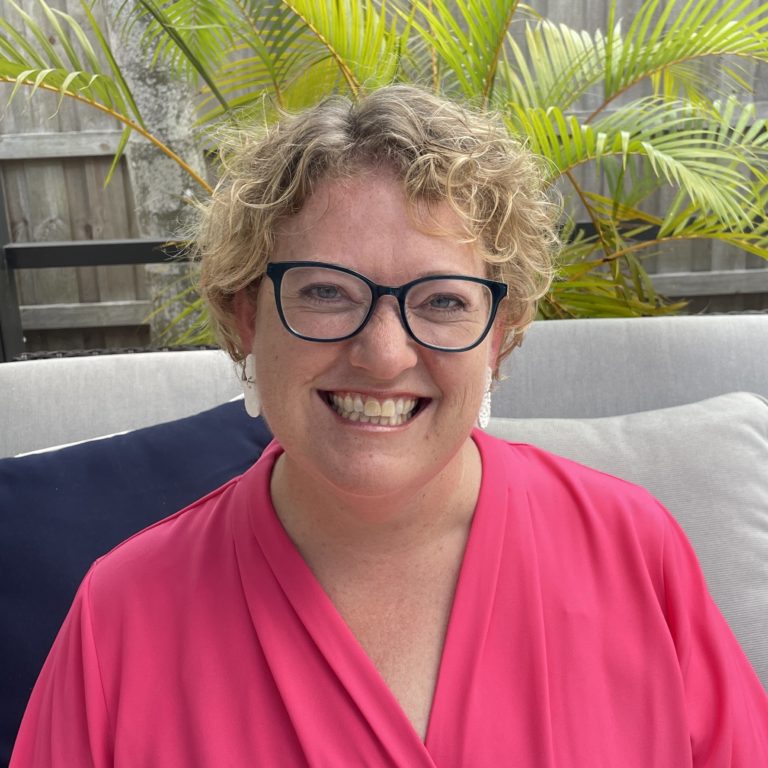
Director Joy Mayer (she/her) founded Trusting News in 2016 after a 20-year career in newsrooms and teaching. She spent 12 years at the Missouri School of Journalism, where she created an audience engagement curriculum and a community outreach team in the newsroom of the Columbia Missourian and also taught web design and print design. She lives in Sarasota, Florida, and can be reached at joy@TrustingNews.org or on Twitter @mayerjoy.
